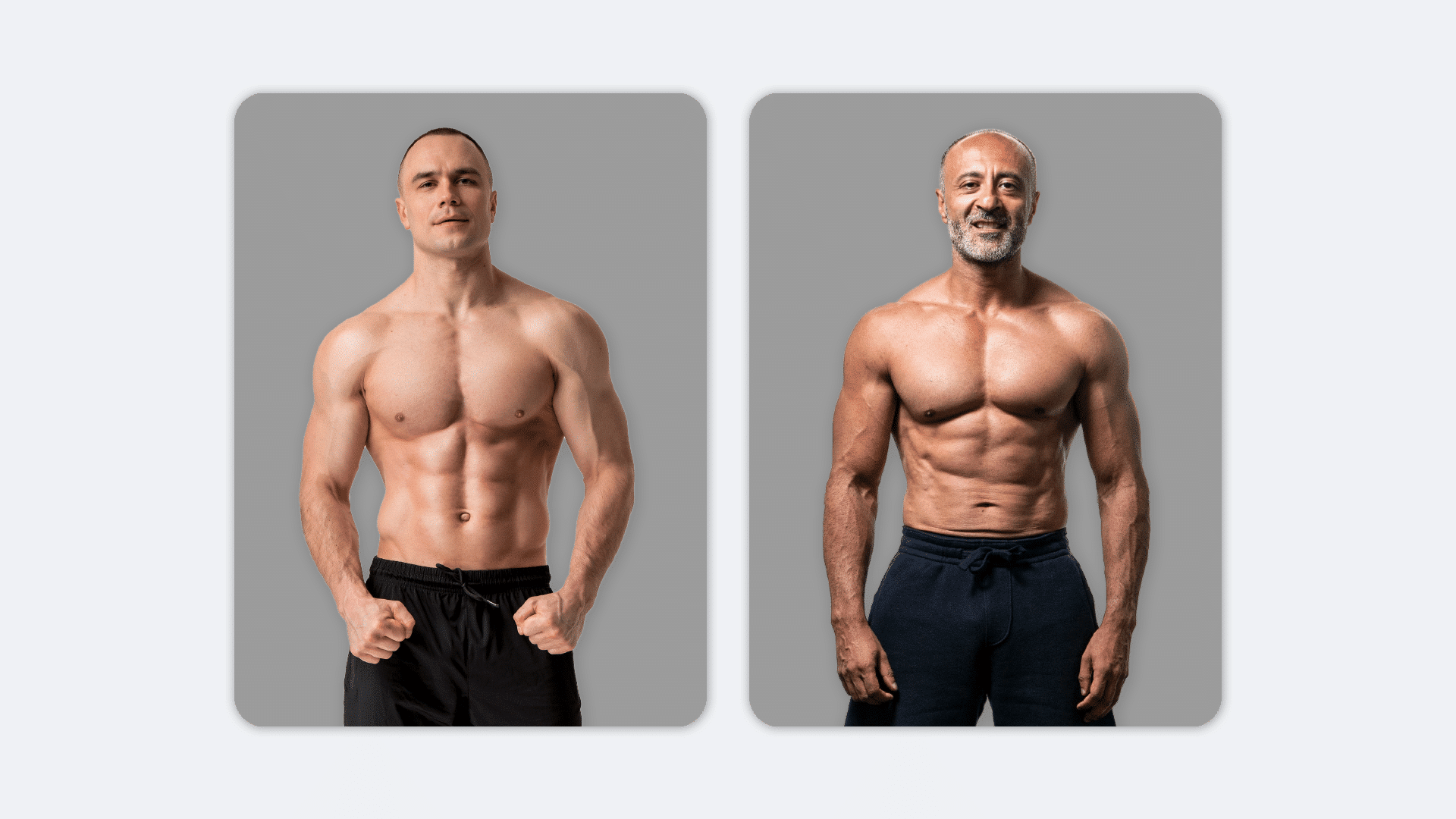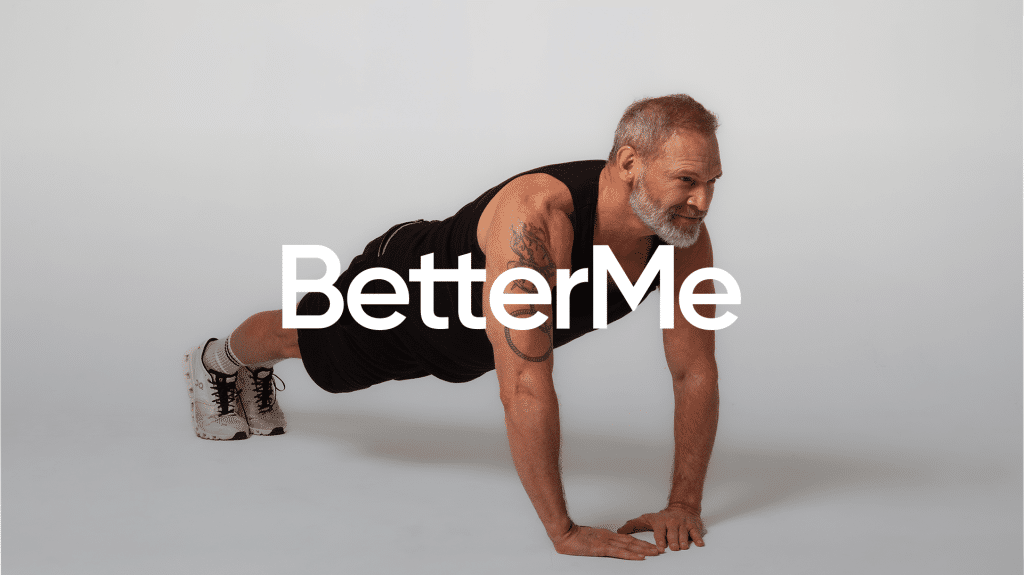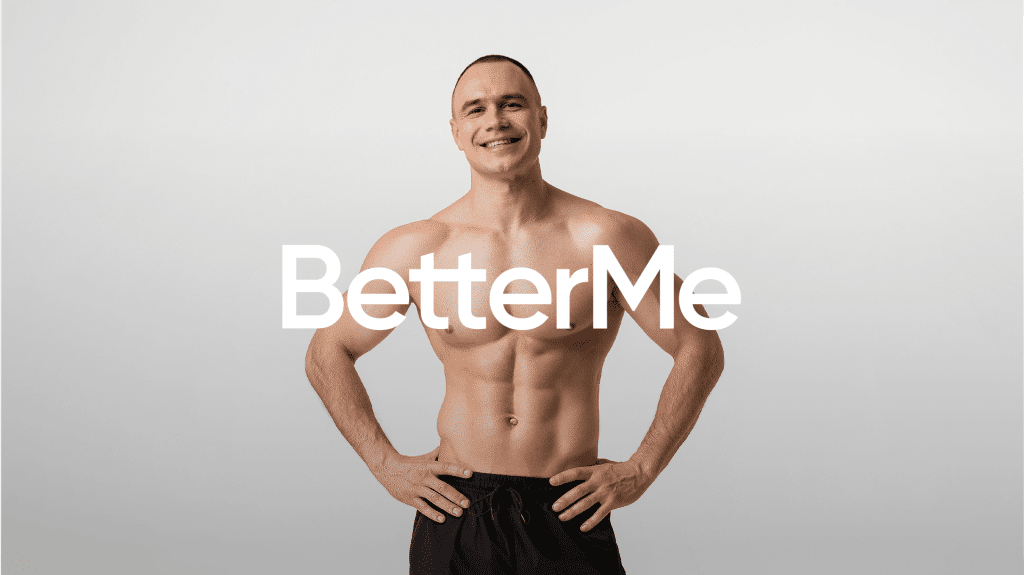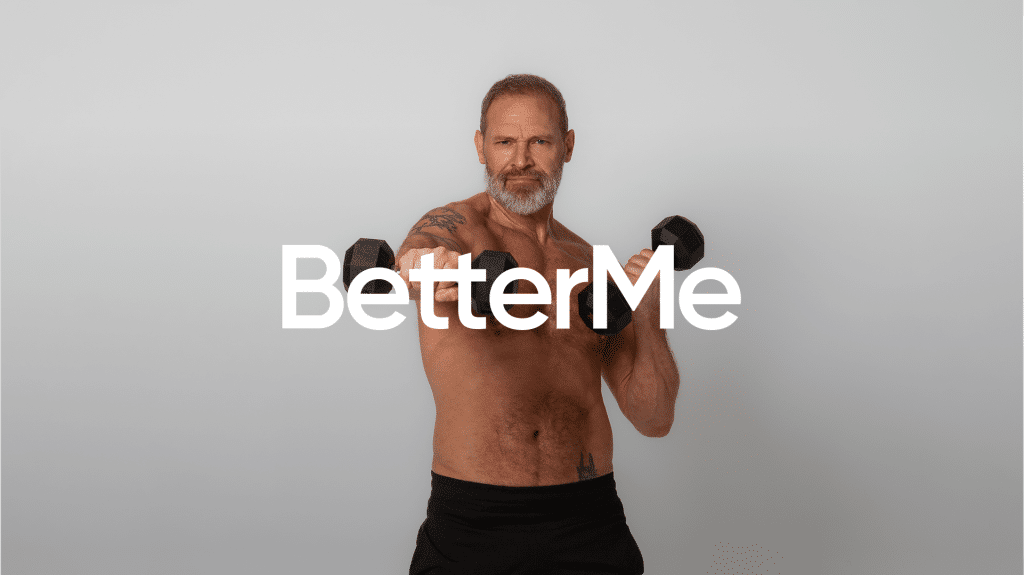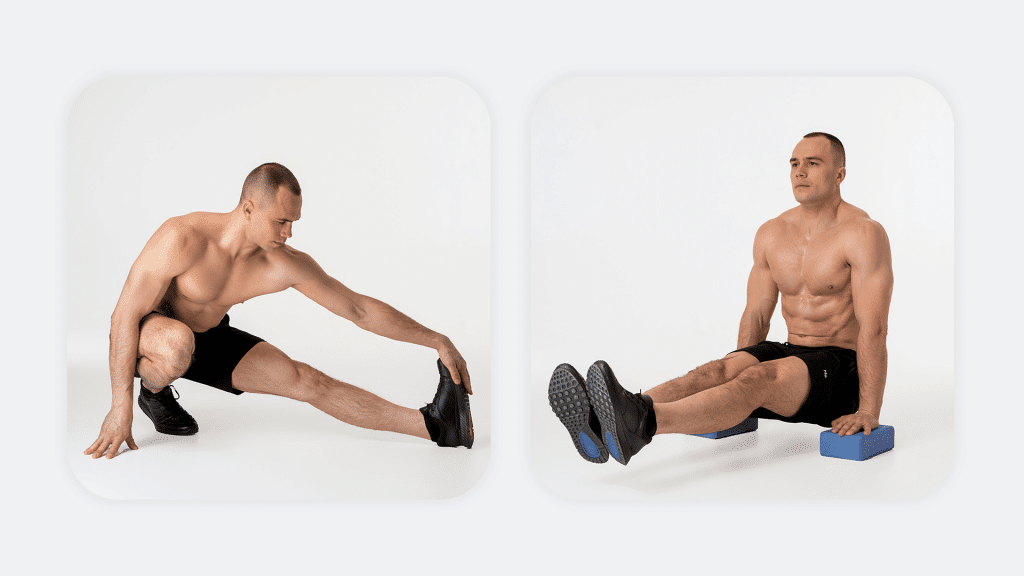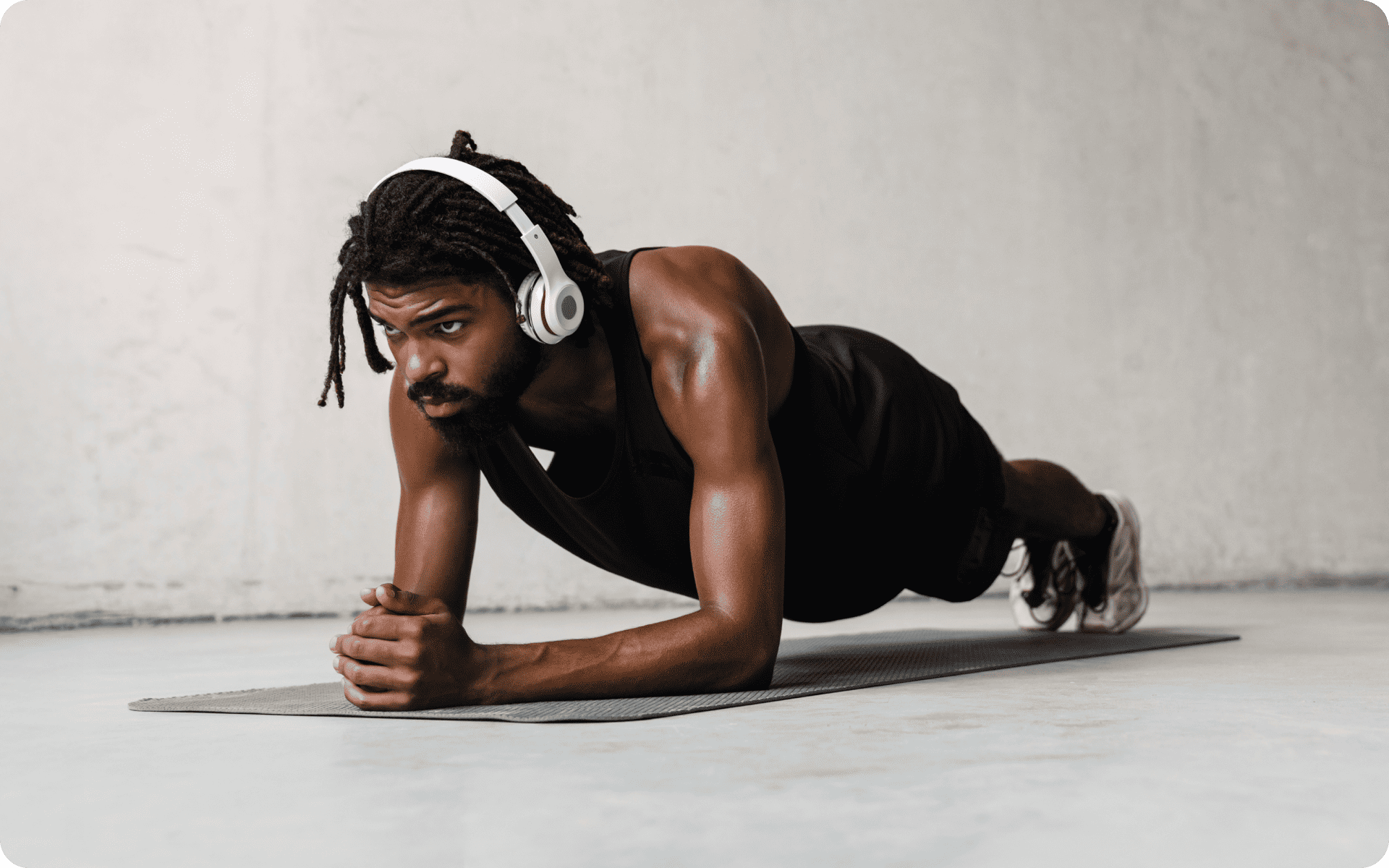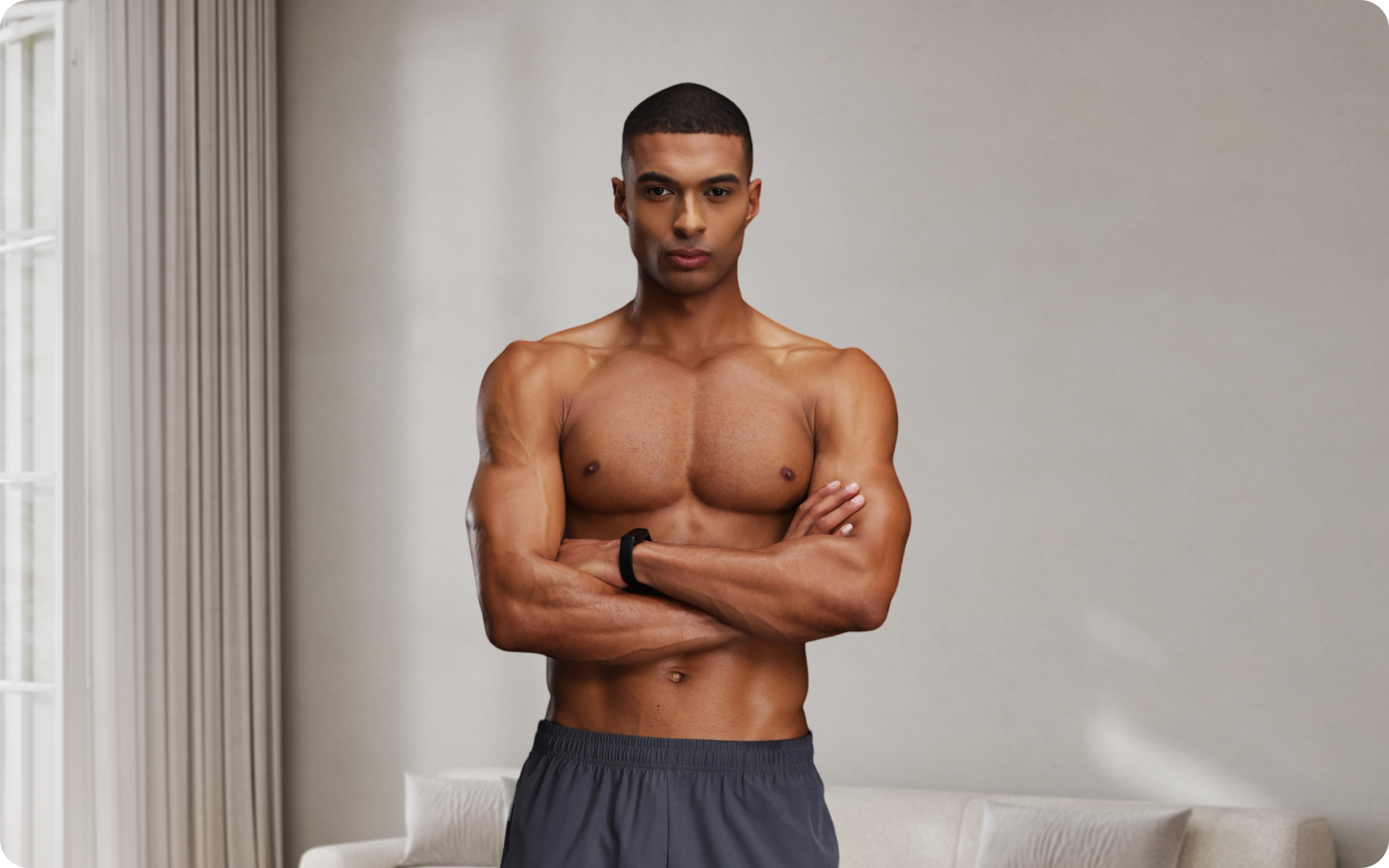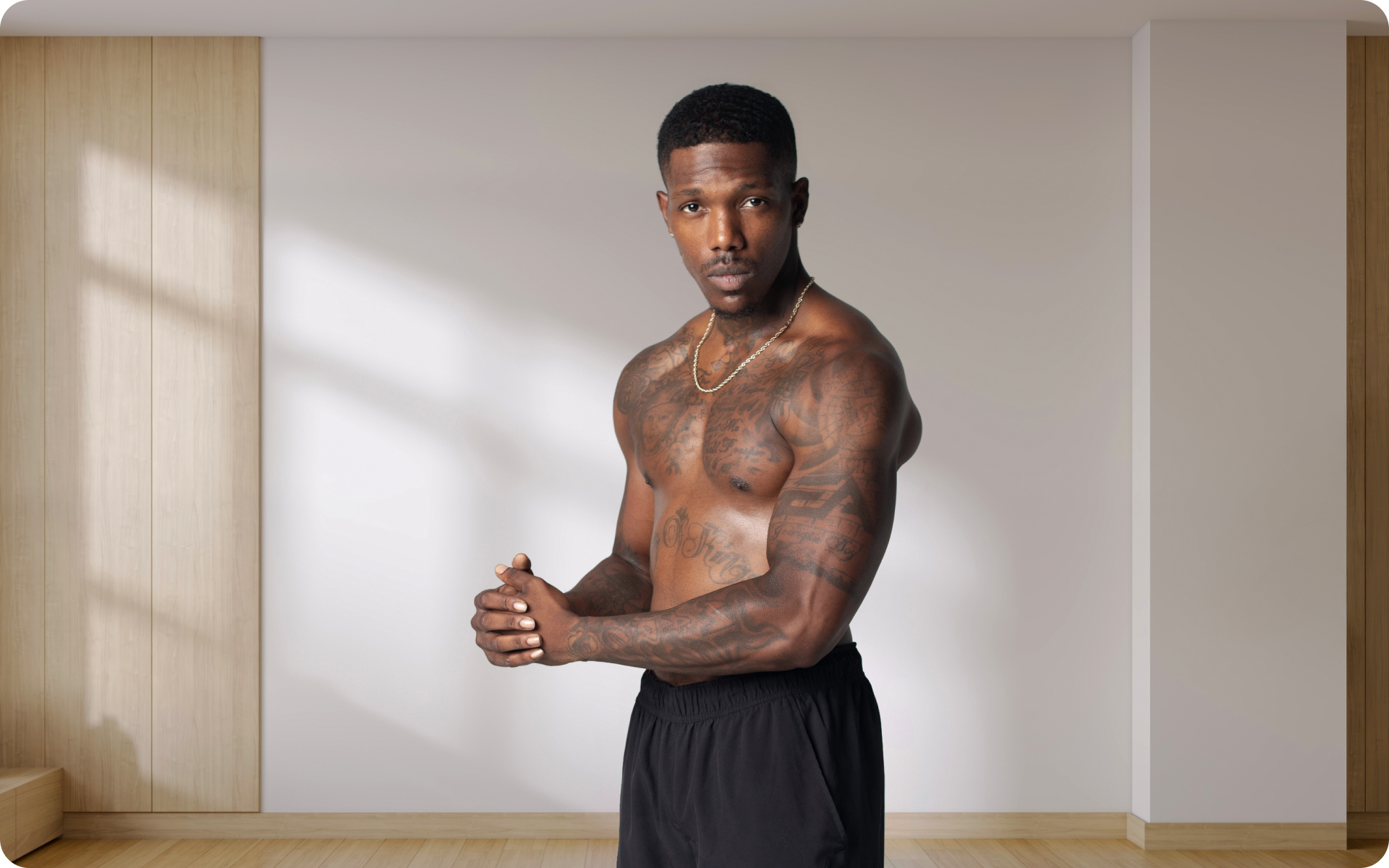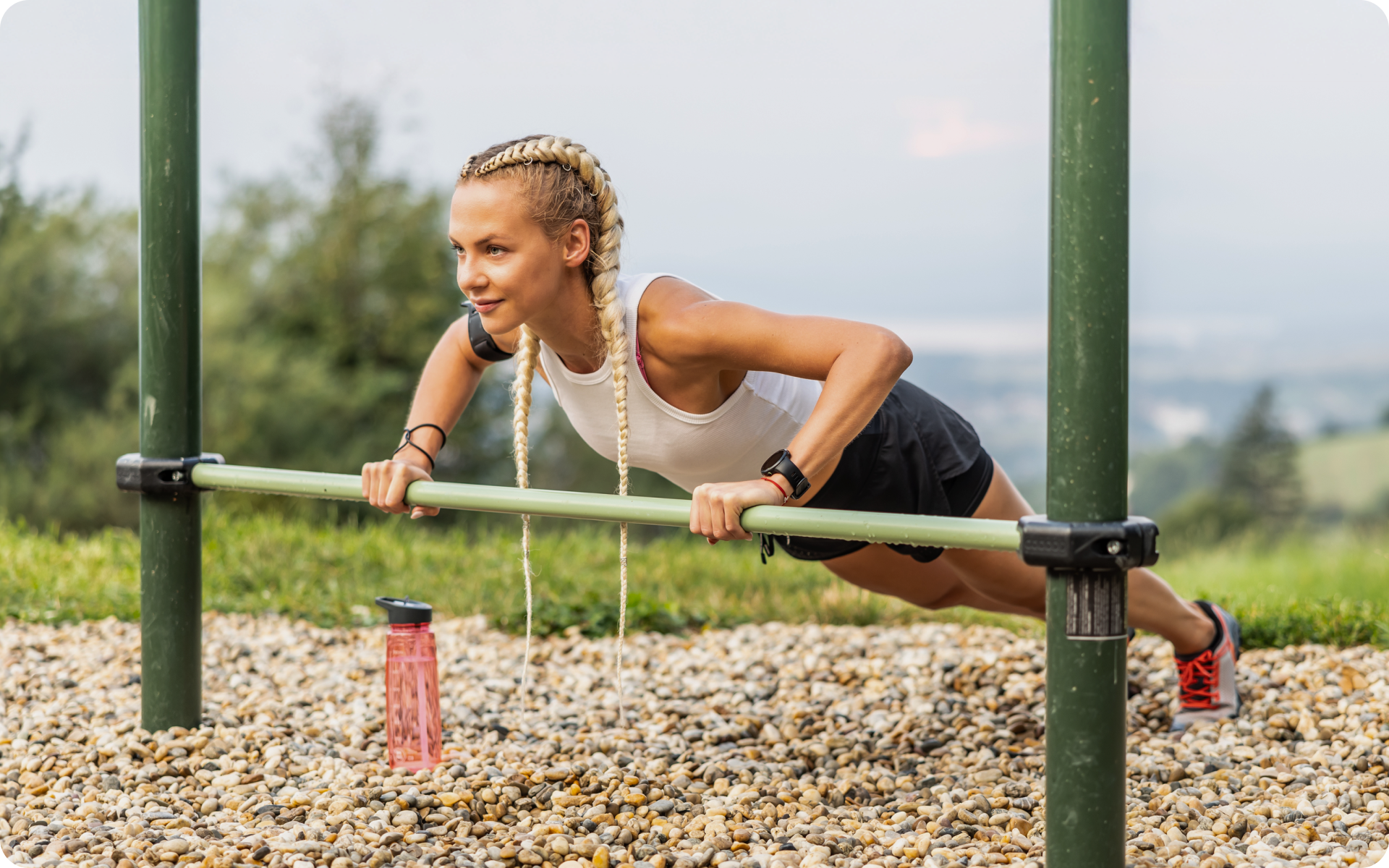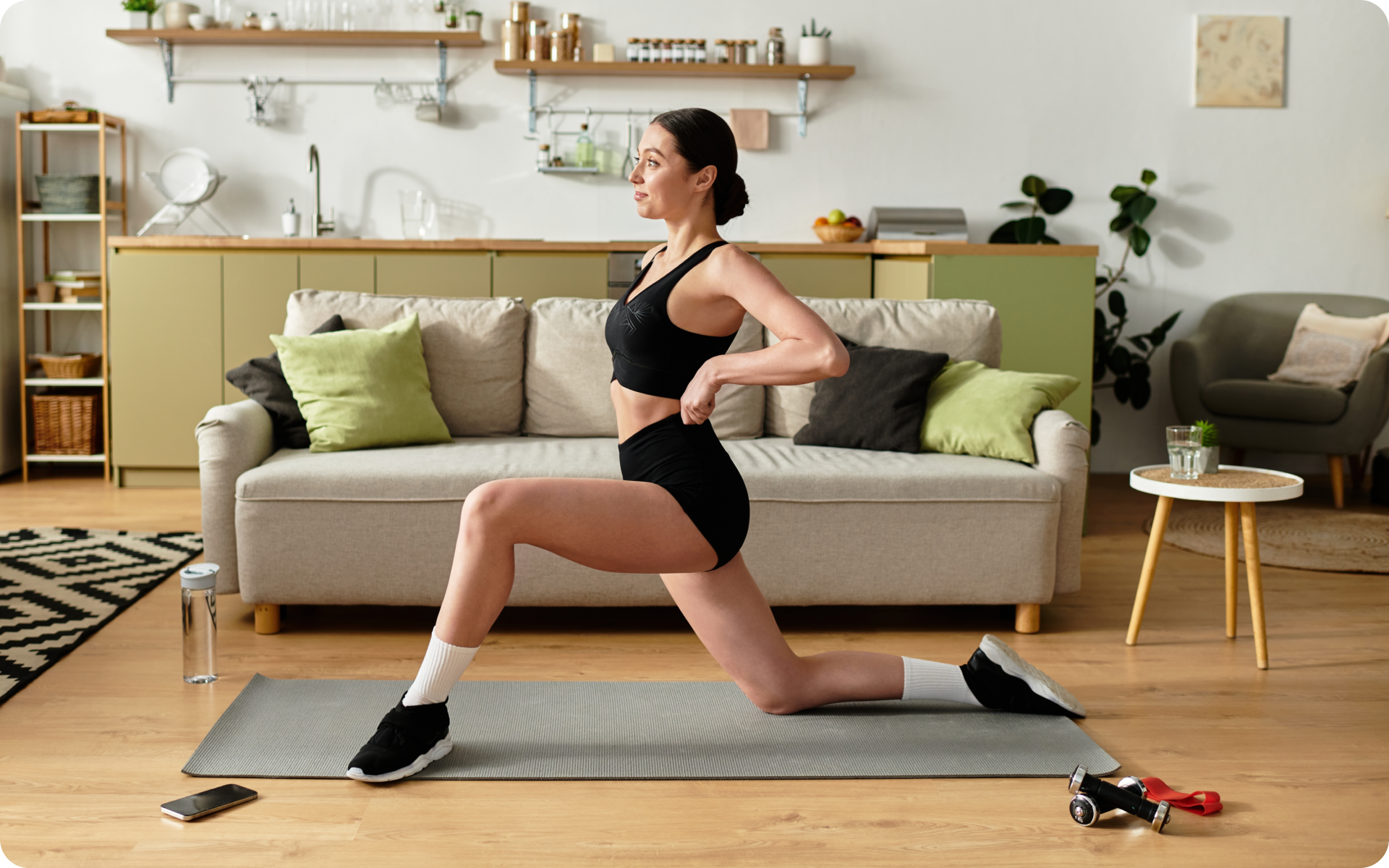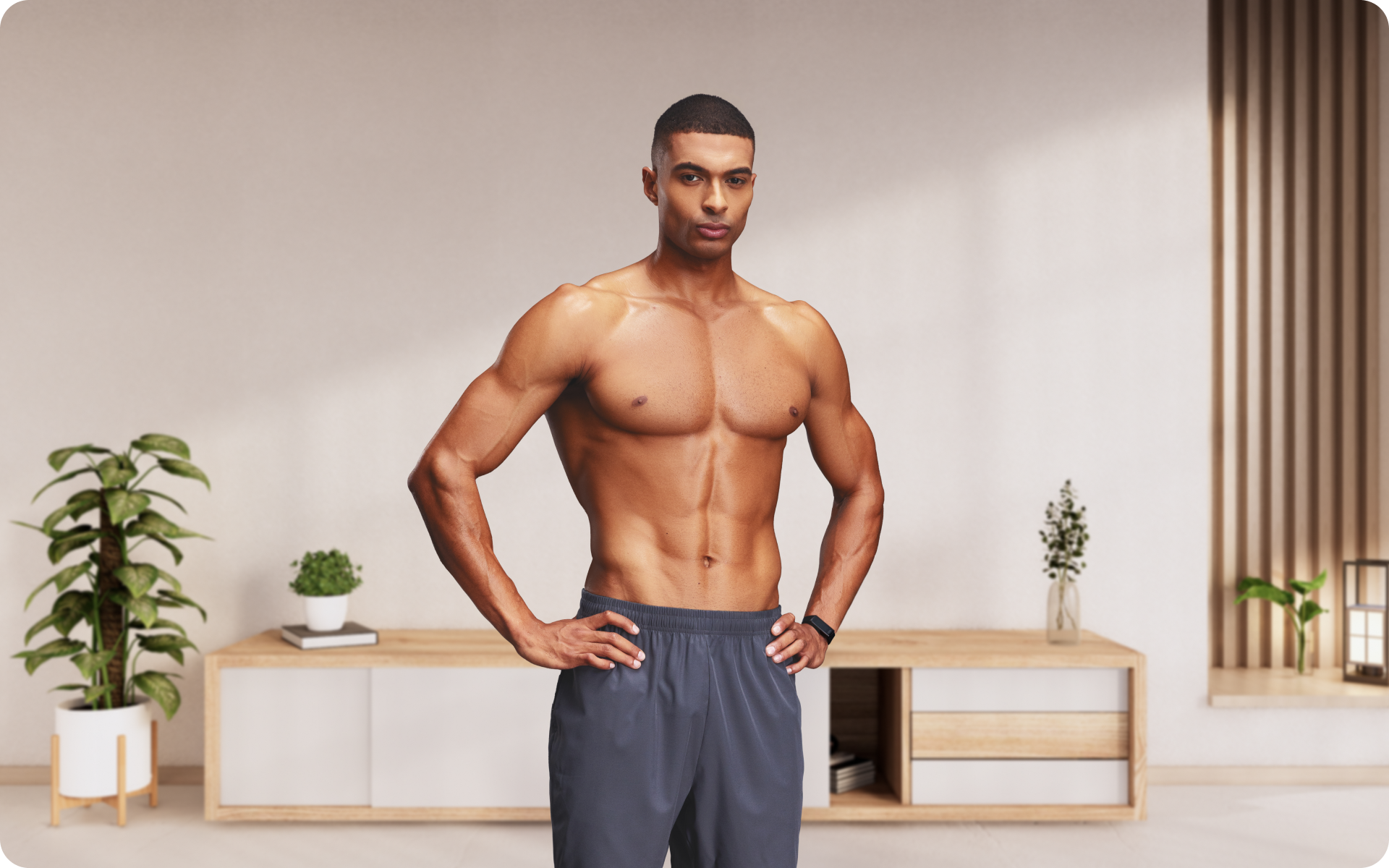Calisthenics is a broad term that includes all kinds of bodyweight workouts. A distinct quality of these workouts is that they don’t require any equipment. You can do them anytime and anywhere. The individual uses their body weight as the resistance which can enhance strength, coordination, endurance, and flexibility.
Different types of calisthenics exercises can be performed to target various muscle groups. You can perform repetitions of each movement to help build muscle and increase strength. Most people will utilize calisthenics workouts to improve their conditioning by combining the movements with HIIT workouts. It may also be used as a warm-up or cool-down for other fitness routines, or it could be utilized as a workout of its own.
Calisthenics has made a huge comeback in the fitness world. This is largely due to the array of benefits that it is associated with. This article sheds light on different types of calisthenics workouts, which will allow you to create a strategic and effective training routine for yourself.
What Are The 5 Types Of Calisthenics?
Calisthenic exercises can be an effective way to build muscle and increase strength. Including multiple movements in your routine will ensure you target different muscle groups. When you follow a consistent routine, that is well-designed to include all major muscle groups, you may begin to notice a huge improvement in your fitness level over time.
Check out the different types of calisthenics exercises below:
Military Calisthenics
Military calisthenics are the OGs when it comes to regular workouts. They encompass muscles of the whole body and are performed at a pace that can increase your heart rate (1). This method really is the whole package, as the exercises performed engage multiple muscles and joints simultaneously, you can expect to improve your strength, coordination, and endurance altogether!
It’s important to know that military calisthenics are not intended for weight loss. The motive for these workouts is to maintain and enhance fitness levels. They could be combined with other cardio workouts or more calisthenics exercises if you would to lose weight effectively.
Listed below are the exercises that fall under military calisthenics:
- Squats
- Lunges
- Sit-ups
- Crunches
- Leg raises
- Plank (elbow or side)
- Push-ups
- Dips
- Chin-ups
- Pull-ups
- Rope climbing
Read More: Calisthenics Push-Ups 101: The Complete Beginner’s Guide
Aesthetic Calisthenics
Aesthetic calisthenics are a common part of calisthenics training. Just like military calisthenics, they can be combined with other types of calisthenics to help gain muscle mass (2). Bodybuilders and weightlifters will usually include this type of calisthenics in their training program.
This type of calisthenics workout covers several advanced and beginner positions. Athletes may also include calisthenic exercises in their training program to support their field performance. Exercises can progressively increase via increasing the weight, sets, or reps performed, this can help enhance t maximum strength. Performing weighted calisthenics such as squats while optional, can be incredibly effective in increasing strength further.
Freestyle Calisthenics
If you loved playing around on the monkey bars during your childhood, this calisthenics type is for you. These versatile movements resemble moves performed during gymnastics and are quite fun!
You could diversify your movements on the parallel bars and gradually advance towards more complex movements. The risks of injuries are also high when you freely move your body on the bars. It is, thus, recommended to seek professional coaching to maintain proper form without getting injured, As well as ensure you are at the appropriate level when attempting these movements.
Some common exercises in freestyle calisthenics include:
- Extreme Muscle Ups
- 360 Muscle-Up
- Clap Muscle-Up
- Switchblade
- Bar Transfer
- Double Bar Hop
- 270 Dip
- Clapping Dip
- 360 Pull-Up
- Toe Touch Pull-Up
Static Calisthenics
Static or isometric calisthenics include push, pull, and static hold movements. Static holds require the athlete to maintain a certain position for a specific amount of time. The pull and push movements, require a resistance to be moved through a certain range. t. These methods can be effective in gaining strength and increasing muscular force.
Including these in a calisthenics workout is a great option for beginners as no prior training is needed and they can start at a suitable amount. Conventional exercises move working muscles through an eccentric and concentric phase. Static movements on the other hand, as the name suggests, require muscles to remain in the same position while contracting.
Static calisthenics can help build muscular endurance and increase strength in different positions. (3). Please note that you should include ample rest in the workout and make sure to start with an appropriate amount of sets.d. A few reasons why this type of calisthenics is considered to be tough:
- More muscle fibers are recruited, which leads to a higher work capacity
- There are few contact points with ground or equipment
- They can involve long periods of holding challenging positions
Flashy Calisthenics
This is categorized among the advanced types of calisthenics workouts. It includes exercises like one-hand pull-ups, which require a great amount of strength and consistent training.
Flashy calisthenics are typically intended to turn heads. These movements are performed when gym trainers or professional athletes are making videos. Given that these include sophisticated exercises, they demand constant movement and gradual advancement. It goes without saying that following a regular flashy calisthenics workout may help you stay fit and enhance your performance over time, but requires a great amount of strength, frequency, and consistency to achieve these.
BetterMe app is a foolproof way to go from zero to a weight loss hero in a safe and sustainable way! What are you waiting for? Start transforming your body now!
How Many Types Of Calisthenics Exercises?
Now that we know the different calisthenic categories, let’s break down some basic exercises. Below is the list of movements that involve several muscle groups. To begin, it is best to start with the easier movements first, and then progress toward the more advanced exercises once appropriate strength and capacity have been developed.
Calisthenics Triceps And Chest Workouts
The chest is composed of muscles, including:
Small Pectoralis Minor
A thin, triangular muscle located at the upper part of our chest.
Pectoralis Major
A wide, thick muscle that sits under the breast tissue and makes up the front wall of the armpit.
Triceps
The triceps are located at the back of your upper arm and help you straighten your arm through extension of the elbow. (4).
Do you wish to increase muscle mass in your chest and triceps? The good news is that you don’t need heavy equipment to work your upper body. A calisthenics triceps and chest workout can be effective in increasing muscle strength and size.
Here are some exercises that could help:
Incline Push-Ups
Incline push-ups are an easier variation of the standard push-ups. It is performed off of an elevated surface such as a bench, which decreases the difficulty of the movement.
Wall Push-Ups
Stand a few inches away from the wall and use it as a support to push you with minimal resistance. This variation may involve pressure on the wrists but is an easier push-up progression.
Knee Push-Ups
This variation is performed with your knees on a flat surface and hands planted firmly on the ground, slightly wider than shoulder width This is another option suitable for those who are not able to do a full body weight-push up yet.
Decline Push-Ups
This variation requires your feet to be placed on an elevated surface. This gradient increases the difficulty of a standard push-up. When you keep your feet on an elevated surface, it increases the weight that your upper body lifts.
Read More: Is Radio Calisthenics For Everyone? Here’s What You Need To Know
Close Grip Push-Ups
This requires you to set up in a position with your hands closer together than a traditional push-up. This variation targets the tricep muscles more than a traditional push-up while still incorporating your chest and shoulder muscles.
Wide Grip Push-Ups
This variation requires a wider hand position than a traditional push-up. The wide-grip push-up engages your chest, shoulder, and tricep muscles.
One-Hand Push-Ups
This is one of the more advanced types of calisthenics exercises. You can achieve this with appropriate time and training as well as assistance from a professional. Developing the strength required to perform this variation may also significantly improve your balance and stability throughout your shoulder joint. (4).
Uneven Push-Ups
Position one hand on the floor, and one hand on an elevated surface. Then, perform a push-up, this will increase the intensity of the exercise and isolate the sides of your upper body.
Calisthenics Back Workouts
Our back is made up of the key muscles responsible for posture and performance in day-to-day activities. Muscles of the back include:
Trapezius
The trapezius is a big muscle on your neck and shoulders. It has two parts, the upper and lower trap. They help lift and pull back your shoulders and let you move your neck from side to side.
Teres Minor And Major
The teres minor is a small muscle located on the outer side of the shoulder blade. The teres major is a larger muscle that is located below the teres minor on the back of the shoulder blade. These muscles play an important role in the function, stability, and strength of the shoulders.
Latissimus Dorsi
Often referred to as the ‘lats’, this large muscle spans from the lower back to the upper arm. It is like having big wings on both sides of your spine. The lats play an important role in most upper body movements and the development of this muscle can enhance physical performance.
Lumbar Spine
The lumbar spine plays a vital role in supporting the upper body providing stability, and flexibility, and helping enable movement such as bending forwards and backwards and laterally. The erector spinae muscles, quadratus lumborum, and muscles of the core and lower back provide crucial support for the lumbar spine. Calisthenic back workouts are your best friend when you want to strengthen your back without weights. You can do them at home without depending on a machine or an instructor.
Some exercises that you should learn include:
- Horizontal Pull-Ups
Inverted rows or horizontal pull-ups target the back muscles. When you do this exercise regularly, you may notice improvements in your posture and an overall stronger body. - Wall Pull-Ups
You can do the wall pull-ups using a sturdy doorframe or a pull-up bar. This exercise is effective in increasing total upper body strength as well as improving grip strength - One-Hand Pull-Up
This type of pull-up requires an immense amount of shoulder strength. This advanced exercise is performed by holding onto a pull-up bar with one hand and pulling yourself up. It’s important to perform equal repetitions on each side for optimal muscle balance. - L Pull-Up
This exercise starts the same as the traditional pull-up. However, you make an L-shape with your lower body when you move upwards. This is an advanced variation of the standard pull-up which challenges the core and hip flexors. - Muscle Up
A muscle-up combines tricep dips with traditional pull-ups. It is performed by doing a pull-up and then switching to a tricep press once you have raised yourself to a height suitable to transition
Intense sweat sessions, working weight loss tips, lip-smacking recipes come in one package with the BetterMe app. And all of it is at your fingertips, start transforming your life now!
What Calisthenics Variations Are The Best?
You may feel dazed or overwhelmed after learning the 5 types of calisthenics and various exercises included. After all, with so many options, how can you determine which is the best type yourself?
If you are stuck and feel like you need some further assistance scroll down! We have listed the X best calisthenics exercises of all time!
Bodyweight Squat
- Keep your feet at a distance wider than your hips while pointing your toes slightly outwards.
- Inhale, tighten your core, and keep your body stable. Initiate the movement by breaking at the hips to sit down into a squat. Keep the weight in your mid foot, and allow your knees to track forward over your mid foot too.
- Squat down until your thighs are parallel to the floor or if you can control the range further. Your feet should remain flat on the ground.
- Return to standing by driving through your feet into the ground.
Lunges
- Begin by engaging your core muscles and standing with your feet shoulder-width apart,
- Step forward with one leg and shift your weight forward, ensuring that you plant your front foot firmly into the ground
- Maintian a vertical shin in your front leg and lower your back knee to the ground. Work to a depth that you can control.
- To return to the start position, push through your front foot and push yourself back up. Repeat the steps with your other leg.
Burpees
- Start in a standing position with your feet hip-shoudler width apart.
- Lower your body into a squat position by bending your knees and placing your hands on the ground.
- Kick or move your feet back, so you are in a high plank position. Lower your chest to the ground and then press back up the the plank position.
- Bring your feet forward to quickly return to the squat position. Jump up and reach your hands overhead.
- Control the land and perform the next repetition.
Plank
- Set up in a high plank or push-up position, and then move to be resting on your forearms.
- Ensure that your hips are raised and in line with your shoulders. Your body should be in a straight line from your shoulders to your heels.
- Keep your forearms flat on the floor and elbows under your shoulders while your feet remain hip-width apart.
- Squeeze your abdominals and glutes to ensure your body remains in an active position.
Mountain Climbers
- Set up in a high plank position. Ensure that your weight is evenly distributed between your feet and hands.
- Keep your shoulders stacked over your wrists, and hands planted firmly into the ground.
- Now pull your right knee towards your chest. Do it as fast as possible with control, then return to the start position and alternate legs.
- This exercise requires you to alternate between your legs and maintain proper form for effective outcomes.
Which Calisthenic Exercise Is The Hardest?
If you are a fitness enthusiast who wants to improve your skills, you must wonder which calisthenics exercise is the hardest. A distinguishing quality of calisthenics programs is that you don’t need to purchase different types of calisthenics equipment. All you need is a consistent training routine to produce physical results.
Are you looking to advance your calisthenics exercise? Here are 4 types of calisthenics that are considered the most challenging. It’s important to not attempt these exercises until you have developed appropriate strength and movement capacity.
Handstand With Two Fingers
The name itself predicts the challenge that this exercise brings our way. It demands a ton of strength, focus, concentration, and finger conditioning to prep the minor joints. This exercise asks for specific training and plenty of caution!
One Arm Muscle Up To One Arm Handstand
This exercise is a distinct representation of immense strength, stability, skill and concentration. The quick transitions in this exercise may be impossible for beginners and intermediates.
One Arm Planche
This exercise is a demonstration of balance and shoulder control. It exerts more pressure on the wrists and anterior deltoids. The hand-balancing definitely requires some advanced skills!
Straddle Planche Clap Push Up
This is an incredibly advanced exercise, which requires large amounts of upper body strength and control. Maintaining the planche position is just one difficult part of the exercise and requires control in a challenging position. This movement could result in injuries if you have not developed the appropriate qualities needed to perform this.
FAQs
Is calisthenics a type of exercise?
Yes, calisthenics is an exercise that uses the individual’s body weight as resistance. There is no need to purchase different types of equipment when wanting to include it in your fitness regime. Calisthenics can offer many health benefits when performed regularly and does not require a gym membership or equipment to see results.
What type of exercise is calisthenics?
Calisthenics is a type of exercise that uses your body weight as the resistance. It involves movements that often target multiple muscle groups such as push-ups, pull-ups, and squats. These exercises can be performed at various paces, intensities, and volumes, which can help improve your overall strength and coordination.
Can I bulk with calisthenics?
Yes, you can increase muscle mass with calisthenics workouts. By following a well-structured training program, you can make appropriate strength gains and in turn, increase muscle mass over time.
Is calisthenics safer than weights?
Considering that you use your own body weight, calisthenics can be a safe option in comparison to weights. It can place less stress on your joints, and you can get stronger as you advance through routines. However it is important to note that injuries can still occur through calisthenics training, therefore it is important to develop a strong foundation first, before moving on to more advanced movements.
Summary
Calisthenics is a term that covers multiple forms and variations of bodyweight exercises. These workouts can help with building muscle strength, endurance, as well as mental concentration. You can formulate your own calisthenics program to dial in your fitness goals.
When you thoroughly read and evaluate this article, you will discover the many different types of calisthenics. Some workouts are well suited for beginners, while others are only appropriate for intermediates and advanced individuals or experts. People may choose to incorporate different levels of calisthenics as part of their training routine to ensure a balanced, well-rounded training program is followed.
It is best to consult a qualified fitness trainer to learn how to effectively target specific muscle groups and develop proper movement mechanics through all exercises.
DISCLAIMER:
This article is intended for general informational purposes only and does not serve to address individual circumstances. It is not a substitute for professional advice or help and should not be relied on for making any kind of decision-making. Any action taken as a direct or indirect result of the information in this article is entirely at your own risk and is your sole responsibility.
BetterMe, its content staff, and its medical advisors accept no responsibility for inaccuracies, errors, misstatements, inconsistencies, or omissions and specifically disclaim any liability, loss or risk, personal, professional or otherwise, which may be incurred as a consequence, directly or indirectly, of the use and/or application of any content.
You should always seek the advice of your physician or other qualified health provider with any questions you may have regarding a medical condition or your specific situation. Never disregard professional medical advice or delay seeking it because of BetterMe content. If you suspect or think you may have a medical emergency, call your doctor.
SOURCES:
- FULL-SPECTRUM STRONG: ARMY RANGER WORKOUT (n.d., muscleandfitness.com)
- Aesthetic Calisthenics Workout to Build Dense Muscle (2022, noobgains.com)
- Types of Calisthenics: Everything You Need to Know to Get Started (n.d., thehybridathlete.com)
- Triceps brachii (n.d., physio-pedia.com)
